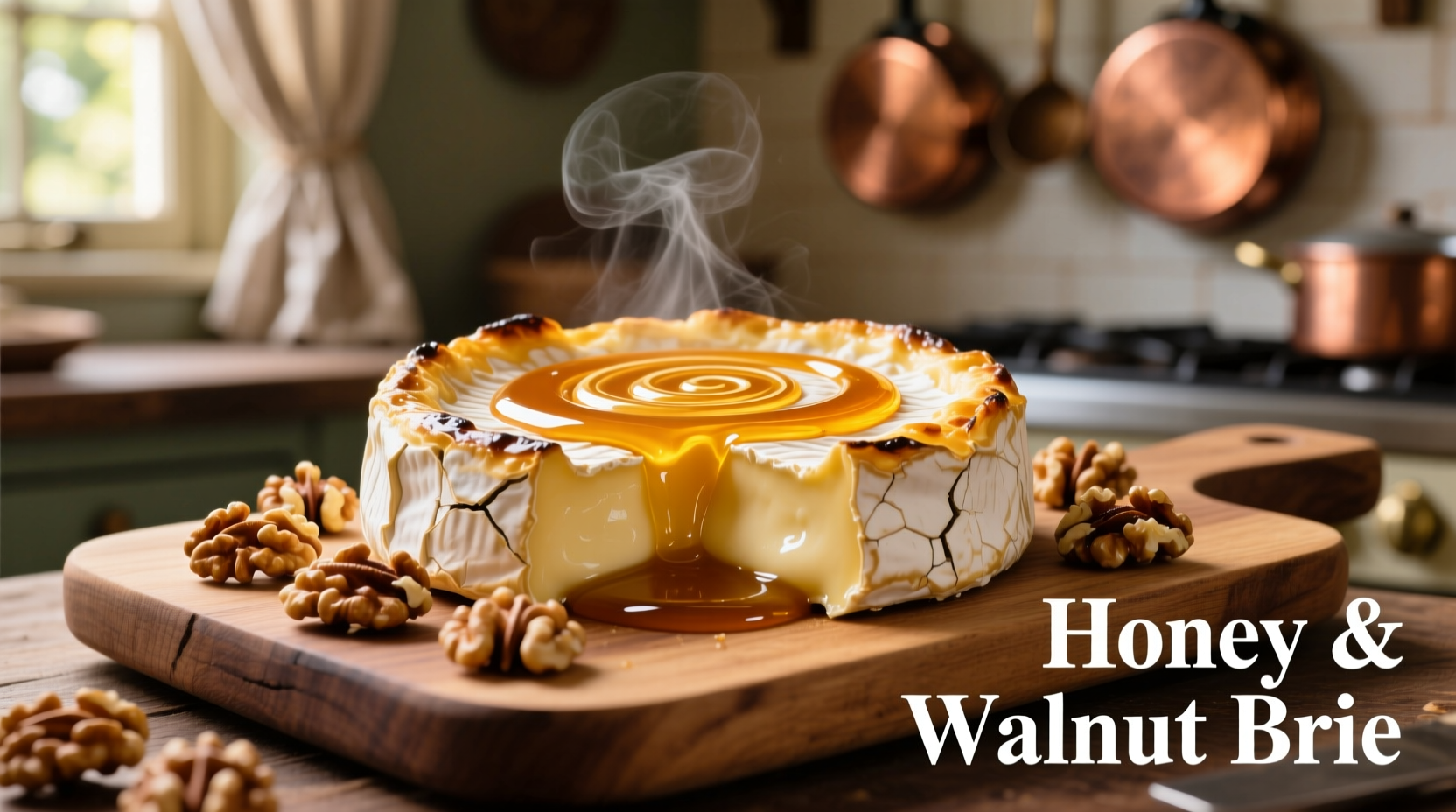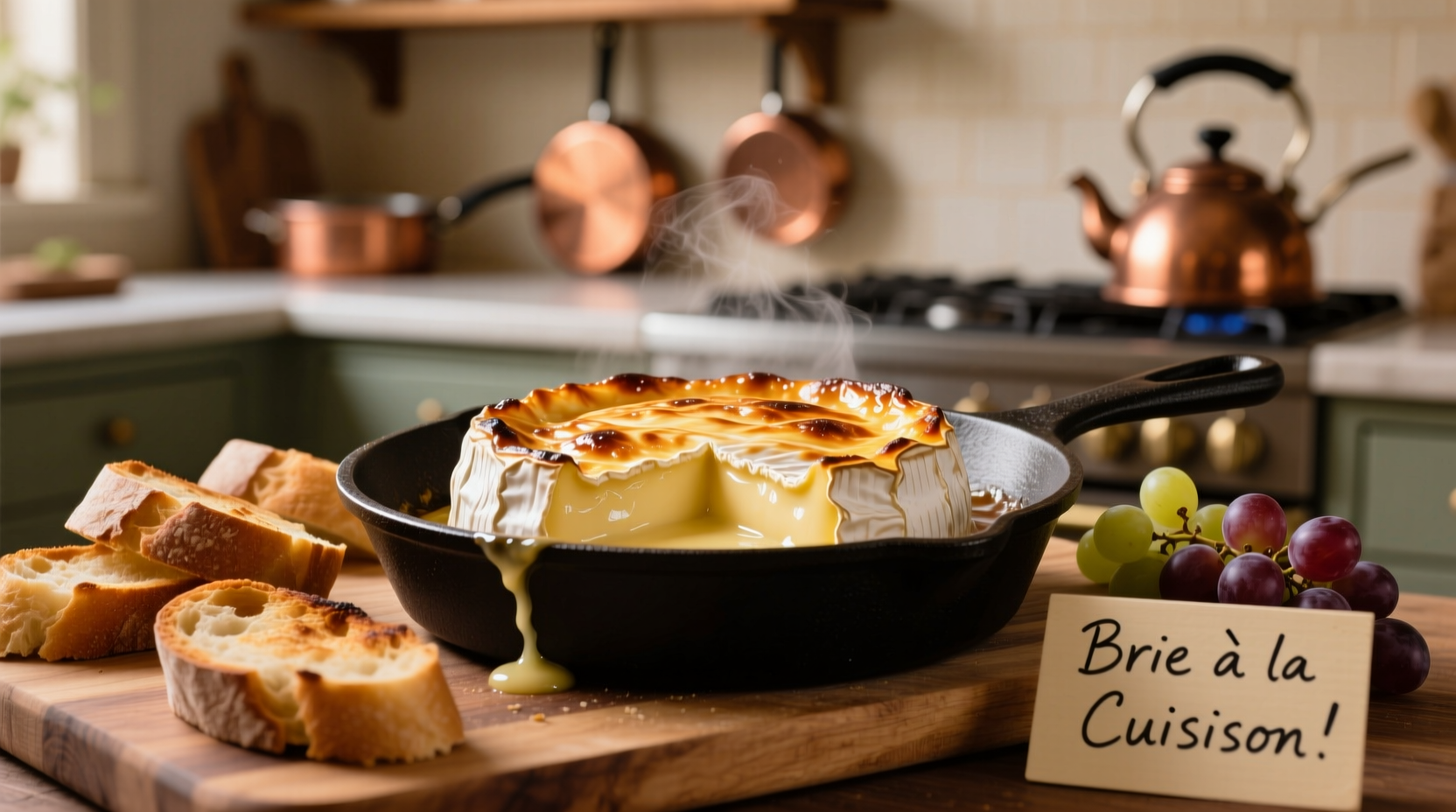Why Brie Becomes Magical When Cooked Properly
When you cook brie correctly, its interior transforms from firm to luxuriously creamy while maintaining structural integrity. The magic happens between 130-140°F (54-60°C)—the precise temperature range where the fats melt without separating. As Sophie Dubois explains from her French culinary training: "Properly cooked brie should flow like warm honey when cut, not pool like melted plastic. This requires respecting both time and temperature boundaries."
Understanding Brie's Unique Composition
Brie's soft-ripened nature comes from its Penicillium candidum mold rind, which breaks down fats and proteins from the outside in. Unlike hard cheeses, brie contains 50% moisture content, making precise cooking essential. The USDA Dairy Science guidelines confirm that soft cheeses like brie maintain optimal texture when heated gradually—never subjected to sudden temperature changes that cause separation.
| Cooking Method | Time | Temperature | Best For |
|---|---|---|---|
| Classic Baking | 15-20 min | 350°F (175°C) | Entertaining, perfect melt |
| Grilling | 3-4 min/side | Medium heat | Summer gatherings, smoky flavor |
| Air Frying | 8-10 min | 320°F (160°C) | Quick preparation, crisp exterior |
Essential Preparation Steps You Can't Skip
Bring your brie to room temperature for 1-2 hours before cooking—this prevents temperature shock that causes uneven melting. Never remove the rind; it's edible and crucial for maintaining structure. Score the top in a diamond pattern to allow toppings to penetrate while creating an attractive presentation. The Culinary Institute of America's cheese curriculum emphasizes that "proper scoring creates steam vents that prevent explosive melting while enhancing flavor infusion."

Step-by-Step Baking Instructions
- Preheat oven to 350°F (175°C) with rack in center position
- Place whole wheel (8-10 oz) in oven-safe dish slightly larger than cheese diameter
- Score top surface in 1-inch diamond pattern without cutting through bottom
- Add toppings: Try 2 tbsp honey, 1/4 cup chopped walnuts, and fresh thyme sprigs
- Bake 15-20 minutes until center reaches 130-140°F on instant-read thermometer
- Rest 5 minutes before serving—the cheese continues cooking off-heat
Avoid These Common Cooking Mistakes
Overbaking causes the fats to separate from proteins, resulting in an oily mess. The French National Institute for Agricultural Research notes that brie's emulsion breaks down irreversibly above 145°F (63°C). Never microwave brie—it heats unevenly and destroys texture. Avoid pairing with strongly acidic fruits like pineapple that can curdle the cheese. Remember: cooking time varies significantly based on cheese size; a 4-inch wheel needs 12-15 minutes while an 8-inch requires 20-25.
Perfect Pairings That Elevate Your Dish
Serve warm—not hot—with crusty baguette slices for dipping. Complementary pairings include:
- Fresh figs or sliced apples for natural sweetness
- Quality fruit preserves (fig, cranberry, or apricot)
- Sparkling wine or light-bodied reds like Pinot Noir
- Toasted nuts for contrasting crunch
"The French tradition serves baked brie as the centerpiece of a cheese course," Dubois explains, "followed by a small green salad to cleanse the palate before dessert."
When Not to Cook Brie: Important Context Boundaries
Certain situations make cooking brie inadvisable:
- Overripe brie (excessive ammonia smell) will leak excessively
- Pre-sliced portions lack structural integrity for baking
- When serving to immunocompromised individuals (pasteurized only)
- As part of a cold cheese board where texture contrast matters
The FDA's food safety guidelines specifically warn against reheating soft cheeses multiple times due to bacterial growth risks in the temperature danger zone (40-140°F).
Storage and Reheating Guidelines
Refrigerate leftovers within 2 hours in airtight container. Consume within 3 days. To reheat properly:
- Bring to room temperature for 30 minutes
- Place in oven-safe dish with any collected juices
- Warm at 300°F (150°C) for 8-10 minutes until center reaches 120°F
- Never use microwave for reheating—destroys creamy texture
Expert Troubleshooting Tips
When your brie leaks during baking, it typically means one of three issues: the cheese was too ripe, the oven temperature was too high, or you didn't score deeply enough. For a firmer texture, chill the scored cheese for 20 minutes before baking to set the rind. If your brie remains firm after recommended time, your oven may run cool—calibrate with an oven thermometer. Remember that cheese continues cooking from residual heat, so remove it just before reaching perfect consistency.











 浙公网安备
33010002000092号
浙公网安备
33010002000092号 浙B2-20120091-4
浙B2-20120091-4